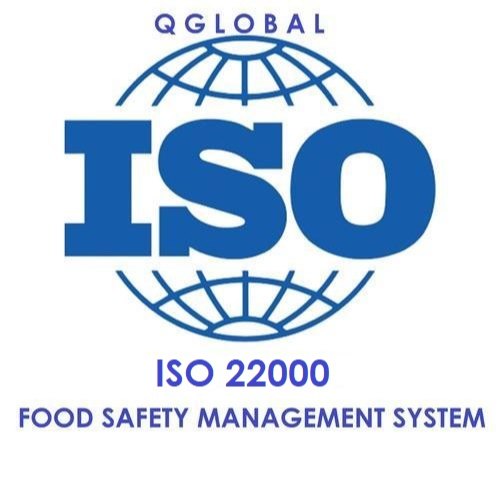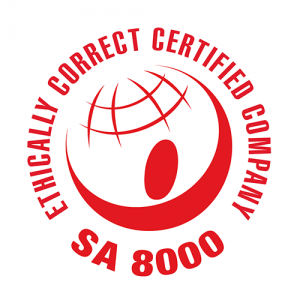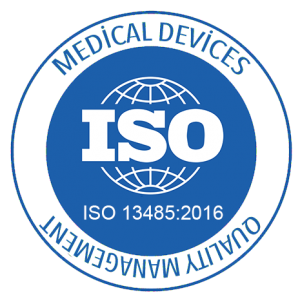ISO 22000 Food Safety Management (in cooperation with Quality Austria)
- The ISO 22000 international standard specifies the requirements for a food safety management system that involves the following elements:
- interactive communication
- system management
- prerequisite programs
- HACCP principles
- Critical reviews of the above elements have been conducted by many scientists. Communication along the food chain is essential to ensure that all relevant food safety hazards are identified and adequately controlled at each step within the food chain. This implies communication between organizations both upstream and downstream in the food chain. Communication with customers and suppliers about identified hazards and control measures will assist in clarifying customer and supplier requirements.
- Recognition of the organization’s role and position within the food chain is essential to ensure effective interactive communication throughout the chain in order to deliver safe food products to the final consumer.
- The most effective food safety systems are established, operated and updated within the framework of a structured management system and incorporated into the overall management activities of the organization. This provides maximum benefit for the organization and interested parties. ISO 22000 has been aligned with ISO 9001 in order to enhance the compatibility of the two standards.
- ISO 22000 can be applied independently of other management system standards or integrated with existing management system requirements.
- ISO 22000 integrates the principles of the Hazard Analysis and Critical Control Point (HACCP) system and application steps developed by the Codex Alimentarius Commission. By means of auditable requirements, it combines the HACCP plan with prerequisite programmes. Hazard analysis is the key to an effective food safety management system, since conducting a hazard analysis assists in organizing the knowledge required to establish an effective combination of control measures. ISO 22000 requires that all hazards that may be reasonably expected to occur in the food chain, including hazards that may be associated with the type of process and facilities used, are identified and assessed. Thus, it provides the means to determine and document why certain identified hazards need to be controlled by a particular organization and why others need not.
- During hazard analysis, the organization determines the strategy to be used to ensure hazard control by combining the prerequisite programmes and the HACCP plan.
- ISO is developing additional standards that are related to ISO 22000. These standards will be known as the ISO 22000 family of standards. At the present time, the following standards will make up the ISO 22000 family of standards:
- ISO 22000 – Food safety management systems – Requirements for any organization in the food chain.
- ISO 22001 – Guidelines on the application of ISO 9001:2000 for the food and drink industry (replaces: ISO 15161:2001).
- ISO/TS 22002- Prerequisite programmes on food safety—Part 1: Food manufacturing; Part 2: Catering; Part 3: Farming; Part 4: Food packaging manufacturing; Part 6: Feed and animal food production
- ISO TS 22003 – Food safety management systems for bodies providing audit and certification of food safety management systems.
- ISO TS 22004 – Food safety management systems – Guidance on the application of ISO 22000:2005.
- ISO 22005 – Traceability in the feed and food chain – General principles and basic requirements for system design and implementation.
- ISO 22006 – Quality management systems – Guidance on the application of ISO 9002:2000 for crop production.
- ISO 22000 is also used as a basis for the Food Safety Systems Certification (FSSC) Scheme FSSC 22000. FSSC 22000 is a Global Food Safety Initiative (GFSI) approved scheme.

You could be also interested in those :
ISO 22000 لإدارة سلامة الأغذية (بالتعاون مع Quality Austria)
ان معايير ايزو 22000 الدولية تتطلب للاغذية نظام إدارة للامور التالية ك
الاتصال التفاعلي
إدارة النظام
البرامج المطلوبة مسبقا
مبادئ التحليل المخاطر ونقاط التحكم الحرجة
وقد أجريت العديد من المراجعات النقدية للعناصر المذكورة أعلاه من قبل العديد من العلماء. يعد الاتصال طوال السلسلة الغذائية أمرًا ضروريًا لضمان تحديد جميع مخاطر سلامة الأغذية ذات الصلة والتحكم فيها بشكل كاف خلال كل خطوة داخل السلسلة الغذائية. وهذا ينطوي على التواصل بين المنظمات على كل من المنبع والمصب في سلسلة الغذاء. وسوف يساعد التواصل مع العملاء والموردين حول المخاطر المحددة وتدابير التحكم في توضيح متطلبات العملاء والموردين.
يعد إدراك دور المنظمة ومكانتها طوال السلسلة الغذائية أمرًا ضروريًا لضمان التواصل الفعال عبر السلسلة من أجل تقديم منتجات غذائية آمنة للمستهلك النهائي.
تم إنشاء وتشغيل أنظمة السلامة الغذائية الأكثر فاعلية في إطار نظام إدارة مُنظم ومُدمج في أنشطة الإدارة العامة للمنظمة. وهذا يوفر أقصى فائدة للمؤسسة والأطراف المعنية. تمت محاذاة ISO 22000 مع ISO 9001 من أجل تعزيز توافق المعيارين.
يُمكن تطبيق 22000 الأيزو بشكل مُستقل عن معايير نظام الإدارة الأخرى أو دمجها مع متطلبات نظام الإدارة الحالية.
تُدمج معايير 22000 الأيزو مبادئ نظام تحليل المخاطر ونقطة التحكم الحرجة وخطوات التطبيق التي وضعتها هيئة الدستور الغذائي. من خلال متطلبات التدقيق، فإنه يجمع بين خطة HACCP مع البرامج المسبقة. إن تحليل المخاطر هو المفتاح لنظامٍ فعال لإدارة سلامة الأغذية، حيث أن إجراء تحليل المخاطر يساعد في تنظيم المعرفة المطلوبة لإنشاء مجموعة فعالة من تدابير الرقابة. تتطلب المواصفة القياسية الأيزو 22000 أن يتم تحديد وتقييم جميع المخاطر التي يمكن توقع حدوثها على نحو معقول في السلسلة الغذائية، بما في ذلك المخاطر التي قد ترتبط بنوع العملية والمرافق المستخدمة. ومن ثم فهي تُوفر الوسيلة لتحديد وتوثيق سبب احتياج منظمات معينة إلى السيطرة على مخاطر معينة ولماذا لا يحتاجها آخرون. خلال تحليل المخاطر، تُحدد المنظمة الاستراتيجية التي يجب استخدامها لضمان التحكم في المخاطر من خلال الجمع بين البرامج المسبقة وخطة تحليل المخاطر ونقاط المراقبة الحرجة.
تعمل ISO على تطوير معايير إضافية تتعلق بـ ISO 22000 وستعرف هذه المعايير بمعايير ISO 22000. في الوقت الحالي ستشكل المعايير التالية مجموعة معايير ISO 22000:
ISO 22000 – أنظمة إدارة سلامة الأغذية – متطلبات أي منظمة في السلسلة الغذائية.
SO 22001 – مبادئ توجيهية بشأن تطبيق ISO 9001: 2000 لصناعة الأغذية والمشروبات (تحل محل: ISO 15161: 2001).
ISO / TS 22002- برامج المتطلبات المسبقة عن سلامة الأغذية – الجزء 1: تصنيع الأغذية، الجزء 2: تقديم الطعام الجزء 3: الزراعة الجزء 4: تصنيع أغلفة المواد الغذائية، الجزء 5: إنتاج الأعلاف والأغذية الحيوانية.
ISO TS 22003 – أنظمة إدارة سلامة الأغذية للهيئات التي توفر تدقيقًا واعتمادًا لأنظمة إدارة سلامة الأغذية.
ISO TS 22004 – أنظمة إدارة سلامة الأغذية – إرشادات بشأن تطبيق ISO 22000: 2005.
ISO 22005 – إمكانية التتبع في سلسلة التغذية والأغذية – المبادئ العامة والمتطلبات الأساسية لتصميم النظام وتنفيذه.
ISO 22006 – نظم إدارة الجودة – إرشادات حول تطبيق ISO 9002: 2000 لإنتاج المحاصيل.
تستخدم المواصفة القياسية ISO 22000 أيضًا كأساس لنظام شهادة سلامة الأغذية FSSC 22000. FSSC 22000 هي خطة مُعتمدة من قبل مبادرة سلامة الأغذية العالمية ((GFSI.




